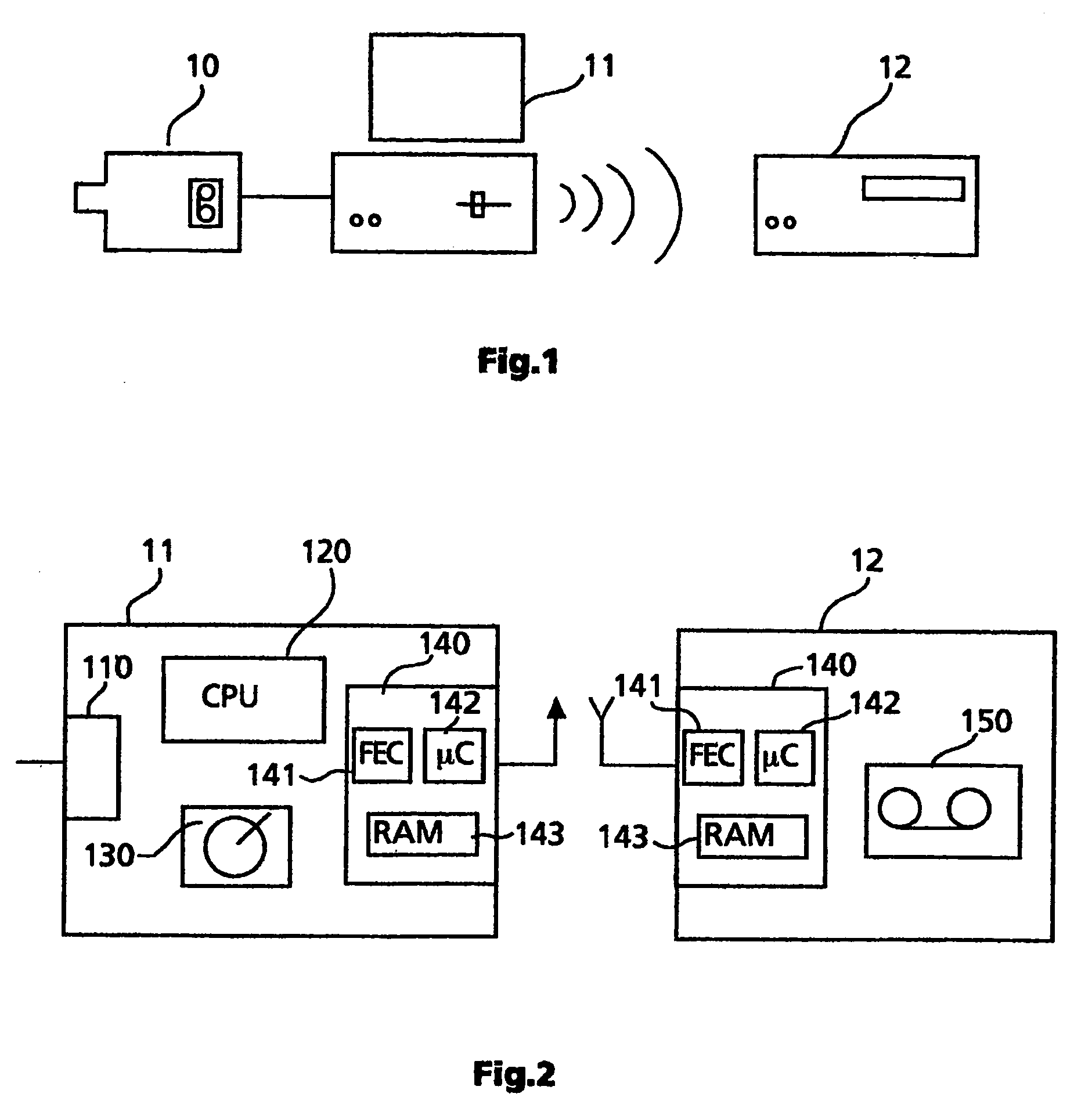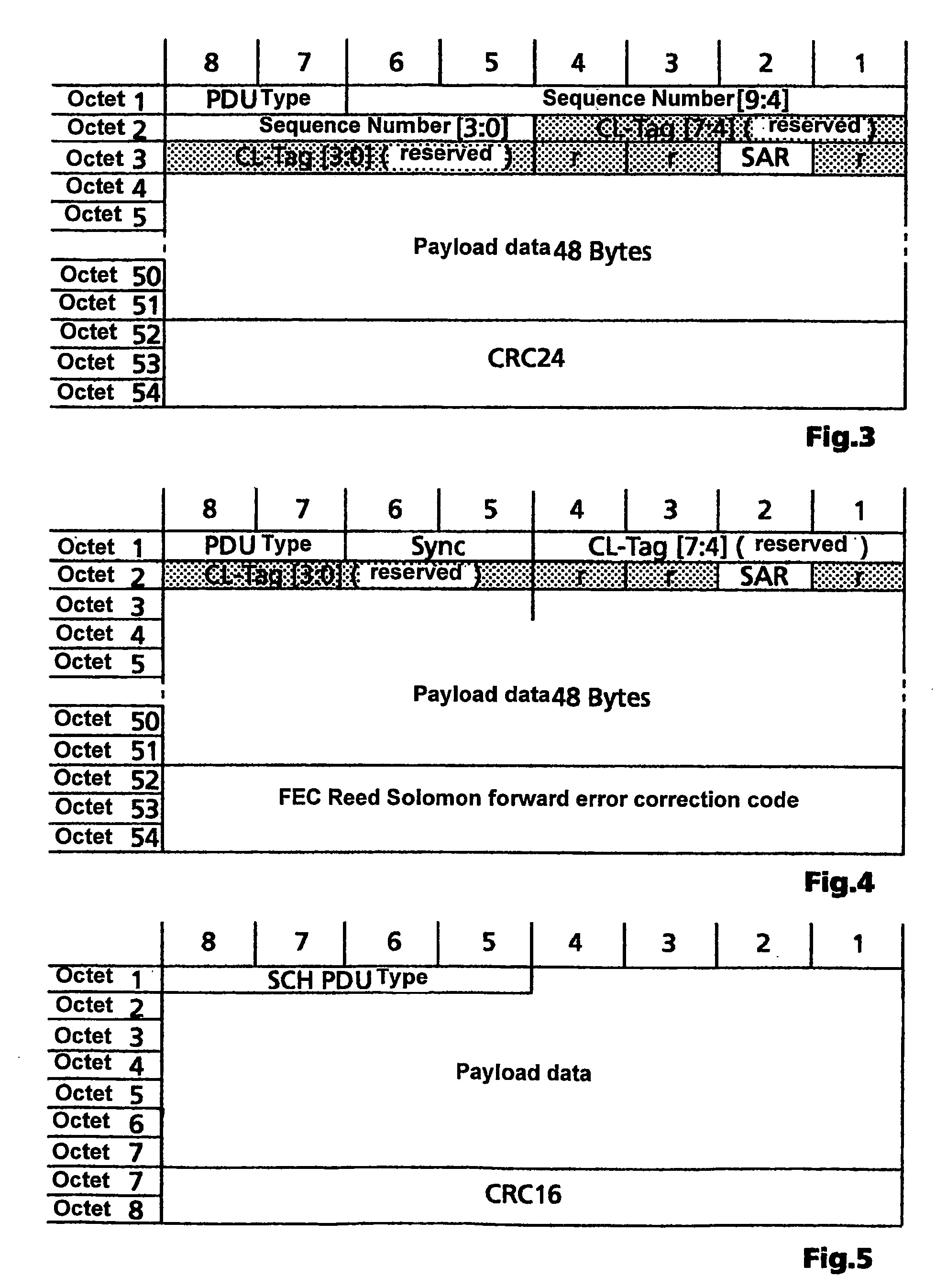Method and apparatus for buffer storage of data packets which are to be transmitted via a connection that has been set up
- Summary
- Abstract
- Description
- Claims
- Application Information
AI Technical Summary
Benefits of technology
Problems solved by technology
Method used
Image
Examples
Embodiment Construction
[0026]The invention will be explained using the example of the implementation of a buffer store for a Hiperlan / 2 interface.
[0027]FIG. 1 shows one example of an application. The reference number 10 denotes a camcorder, for example a mini DV camcorder. This is connected via an IEEE1394 connection to a personal computer 11. The personal computer 11 is used to carry out the postprocessing of a recorded video. To do this, it must be programmed with suitable software. The complete video is then first of all stored on a hard disk. Based on the illustrated application, this complete video is, however, passed on without the use of wires, for archiving purposes, to a DVHS video recorder 12. This need not necessarily be located in the same room as the personal computer 11. The wire-free transmission of the video and audio data from the postprocessed video film is intended to be carried out using the Hiperlan / 2 System. To do this, of course, both the personal computer 11 and the DVHS video reco...
PUM
 Login to View More
Login to View More Abstract
Description
Claims
Application Information
 Login to View More
Login to View More - R&D
- Intellectual Property
- Life Sciences
- Materials
- Tech Scout
- Unparalleled Data Quality
- Higher Quality Content
- 60% Fewer Hallucinations
Browse by: Latest US Patents, China's latest patents, Technical Efficacy Thesaurus, Application Domain, Technology Topic, Popular Technical Reports.
© 2025 PatSnap. All rights reserved.Legal|Privacy policy|Modern Slavery Act Transparency Statement|Sitemap|About US| Contact US: help@patsnap.com



